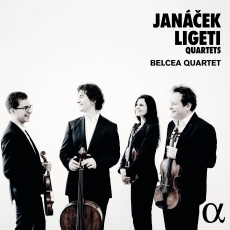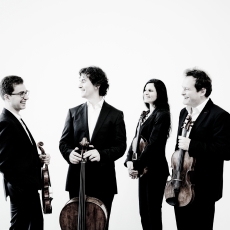Belcea Quartet - Janáček and Ligeti Quartets - Gramophone
It is still well within living memory that Janáček’s two string quartets gave up their cult status to become pillars of the repertoire, and a glance at the extensive discography confirms that any newcomer must offer something radical or distinctive to compete with the best now available. The main interpretative obstacle in the First Quartet (1923) is how to gauge the progression of its first three movements so the finale is a culmination without obliterating what went before. The Belcea succeed admirably in this respect: they vividly project the agitated recitatives of the initial movement, along with the insinuating folk-inflected motifs and jagged expressive contrasts of those that follow. In the finale, where the anguished climax graphically conveys the wracked emotion of Tolstoy’s tragic novella, they accumulate a remorseless intensity.
On a marginally larger scale, the Second Quartet (1928) marks a formal advance in that each of its movements only comes into focus within the greater context. Hence those outbursts of fraught lyricism in the opening movement, the smouldering pathos then agitated whimsy of its successors, before a finale whose dancelike refrain interlinks episodes that recall earlier ideas as if infusing them with renewed significance en route to an ending as decisive as it is affirmative. The Belcea leave no doubt as to this whole being more than the sum of its parts.
It’s interesting that Ligeti’s First Quartet (1954) has only latterly found favour – the amalgam of Bartókian rhythms and textures with Bergian emotional introspection, towards which Ligeti expressed guarded approval, being precisely its attraction for today’s ensembles. The Belcea convey its reckless audacity while being mindful of the metamorphic process which ensures overall cohesion. This is recommended if this particular coupling appeals, though setting the Ligeti between the Janáček works better than hearing it as an oblique addendum.

